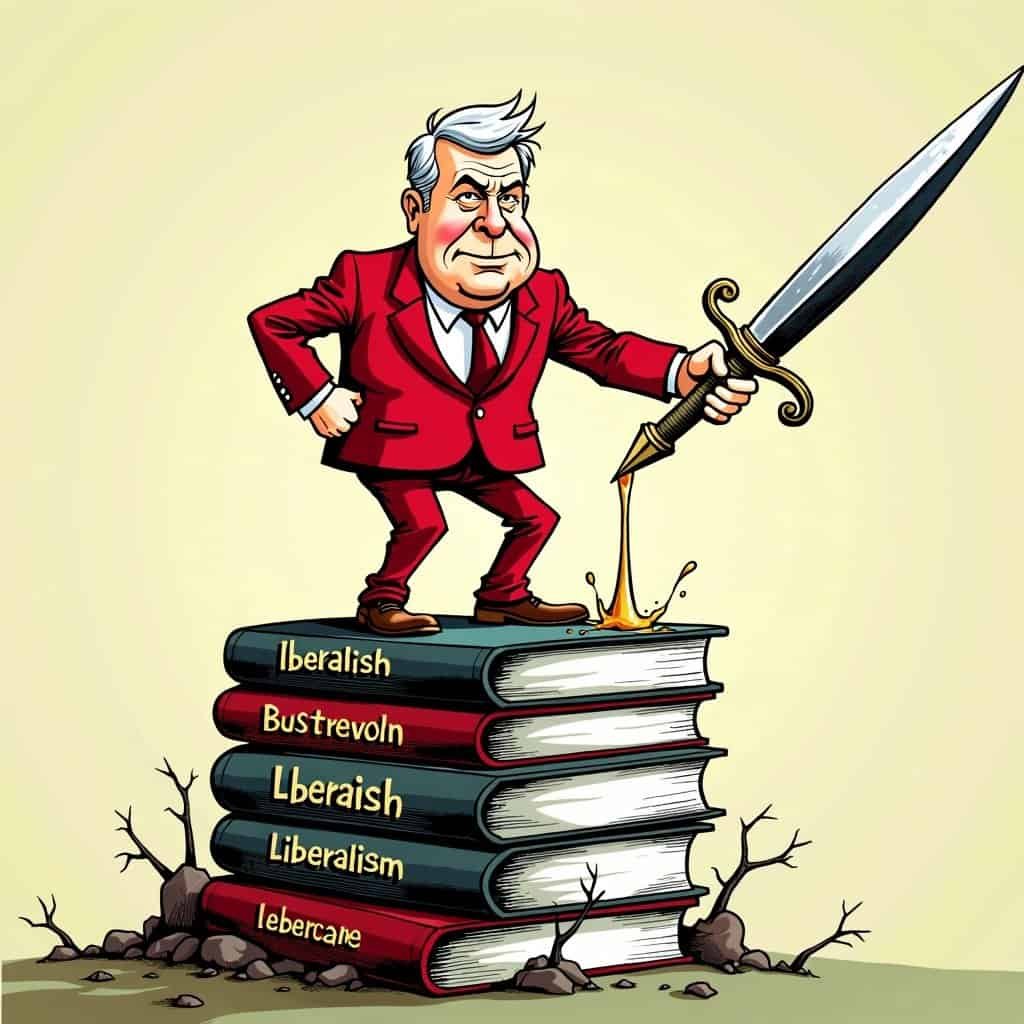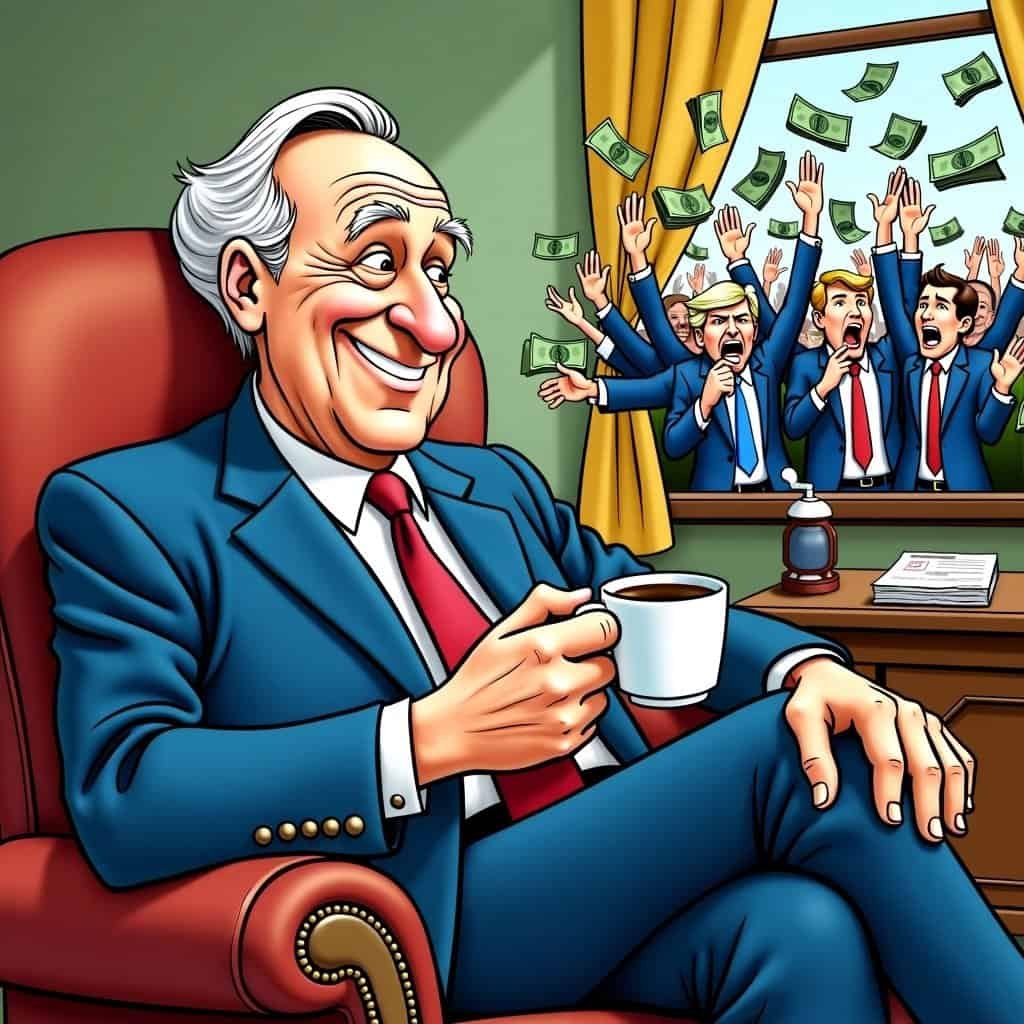If William F. Buckley Jr. were around today, he’d probably be rolling his eyes and cracking jokes about Keynesian economics. Picture approaching Buckley, cigar in hand, suggesting the government should keep throwing money at the economy to fix everything. You’d likely get a snarky comment about how misguided that idea really is.
Keynesian economics, which claims government spending can boost economic activity, might seem like a good idea at first. Imagine a government superhero swooping in to save the day with a magic bag of taxpayer cash. But hold on – that bag isn’t bottomless, and more spending usually means higher taxes and a skyrocketing national debt. Buckley would probably call this economic nonsense dressed up in fancy academic language.
Buckley once quipped, “I’d rather be governed by the first 2,000 people in the telephone directory than by the Harvard faculty.” There’s a reason for that wit. Free-market ideas are based on the belief that everyday people, not bureaucrats, drive real economic progress. And let’s face it, the government’s not exactly winning awards for managing money. Ever heard of the “$31 trillion national debt”?
Keynesian vs. Conservative Economics: A Comparison
| Aspect | Keynesian Economics | Conservative Economics |
|---|---|---|
| Government Role | Active intervention | Limited intervention |
| Spending Approach | Increase during downturns | Reduce overall |
| Tax Policy | Higher taxes for spending | Lower taxes to stimulate growth |
| Focus | Short-term stimulus | Long-term growth |
| Economic Driver | Government spending | Private sector investment |
Keynesians argue for more government spending during economic slumps, thinking it’ll boost demand and pull us out of recession. But let’s put on our conservative glasses for a second. What’s the point of a quick fix if it means saddling future generations with massive debt? It’s like buying a sports car on credit – a brief thrill followed by years of painful payments.
Buckley and other conservative economic thinkers push for cutting taxes and boosting private investments. The logic is simple and makes sense: let people and businesses keep more of their hard-earned cash. Whether it’s a startup getting off the ground or a big company expanding, the result is the same – jobs, innovation, and a thriving economy. This approach is great because it’s straightforward and lines up with American ideals of freedom and self-reliance. Lower taxes and fewer regulations mean more people can chase their dreams without Big Brother watching their every move and taking a cut.
The Economic Impact of Conservative Policies
Benefits of Conservative Economic Policies:
- Lower taxes encourage investment and spending
- Reduced regulations promote business growth
- Job creation through private sector expansion
- Increased innovation and entrepreneurship
- Self-sustaining economic growth cycle
Now, compare this to the Keynesian playbook, where the government spends more because, apparently, spending money you don’t have is suddenly a brilliant idea. It’s like thinking a magic wand can make debt vanish into thin air. Keynes’ theory assumes the government can time its spending perfectly to balance the economy – about as likely as a cat swimming across the ocean in record time.
Conservative policies encourage economic discipline. The Republican approach focuses on growing the tax base through economic expansion. More taxpayers and taxable income lead to higher overall tax revenue, without jacking up tax rates. This self-sustaining cycle just makes economic sense. When taxes are lower, investments go up, jobs are created, and wages grow, leading to more consumer spending. This positive loop raises living standards without the government digging deeper into our wallets.
Let’s talk about the elephant in the room. Keynesian economics often appeals to those looking for quick fixes. Sure, it might seem great in the short term. People think they’re getting ‘free’ stuff without realizing the long-term consequences. It’s straight out of the “Tax-and-Spend 101” playbook, a favorite of liberal policymakers. The issue with this approach is that it eventually stifles growth. Businesses, facing bigger tax bills, cut costs, often through layoffs and lower wages. Surprise! Higher unemployment and slower economic growth! The very people these policies are supposed to help end up worse off, stuck depending on government handouts.
Conservative Economic Principles in Action
Key Conservative Economic Ideas:
- Reduce government spending
- Lower tax rates across the board
- Minimize regulations on businesses
- Promote free market solutions
- Encourage private sector growth
On the flip side, conservative economic principles show that success isn’t about how many people the government can support, but how many people no longer need government support. Buckley would probably say that government support is like a cozy blanket on a chilly night – nice for a while, but not a real solution to fixing the broken window.
Buckley’s focus on lowering taxes and regulations, while promoting private investment, creates a booming environment where businesses can thrive. That’s not just good for big shots and CEOs but for workers and shoppers too. The wealth generated flows through the economy, helping everyone. It’s trickle-down economics, not ‘trickle-broke’ policies.
So, next time someone praises Keynesian economics as the ultimate solution, think of William F. Buckley Jr. And remember, sometimes the best way forward is to keep it simple, strip away the complications, and trust in people’s initiative over government meddling. That’s the real path to economic freedom and prosperity.
Table of Contents
- Keynesian vs. Conservative Economics: A Comparison
- The Economic Impact of Conservative Policies
- Conservative Economic Principles in Action






